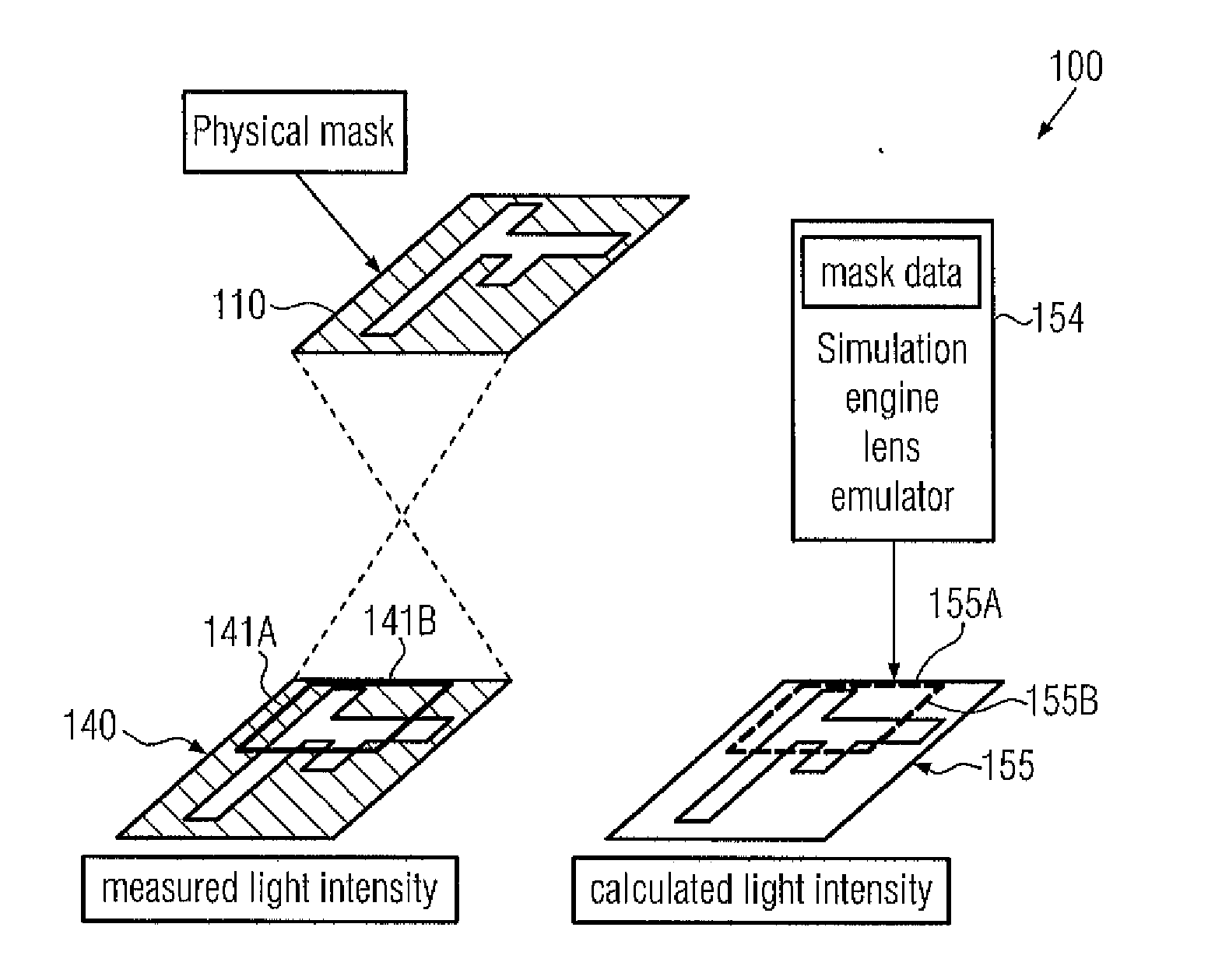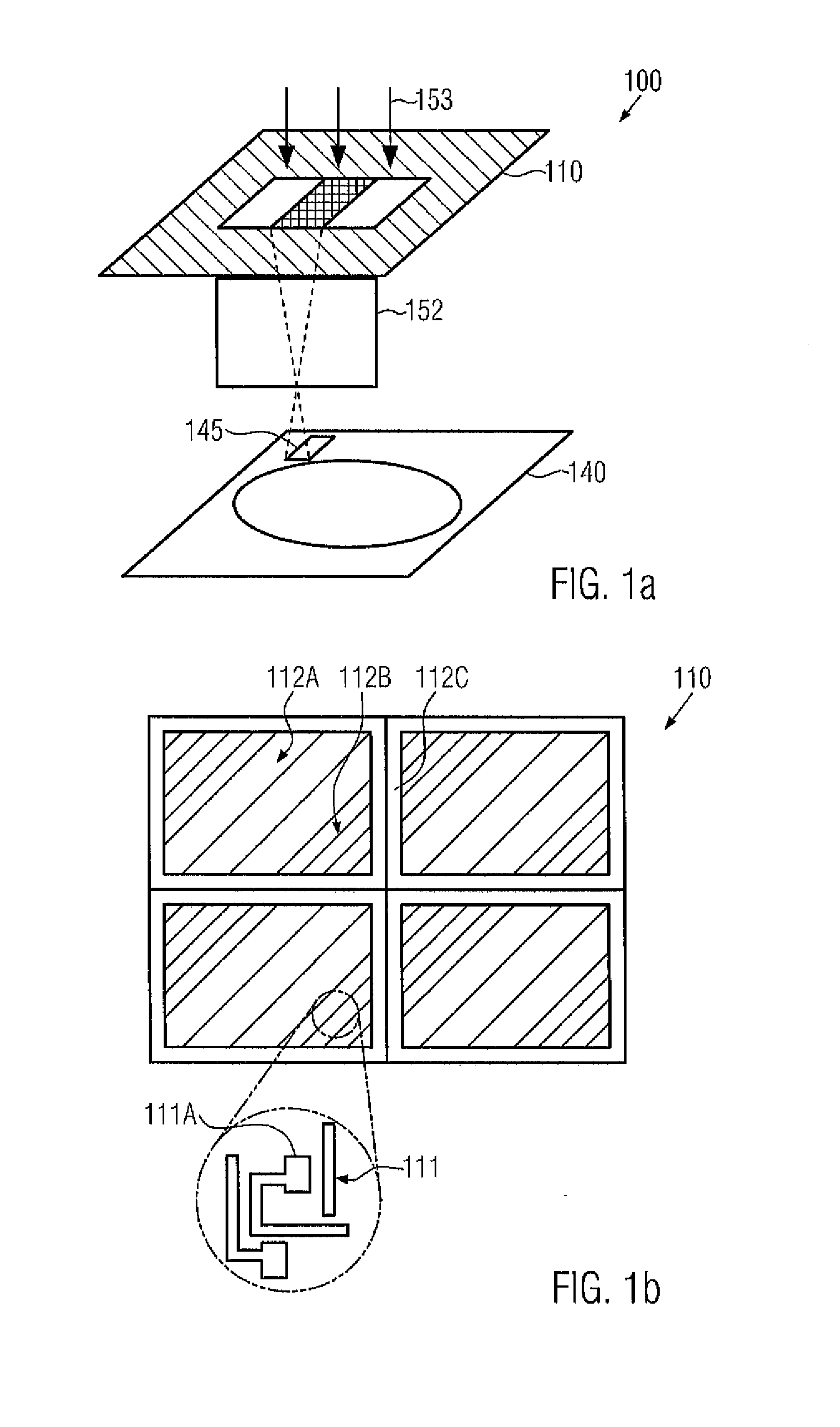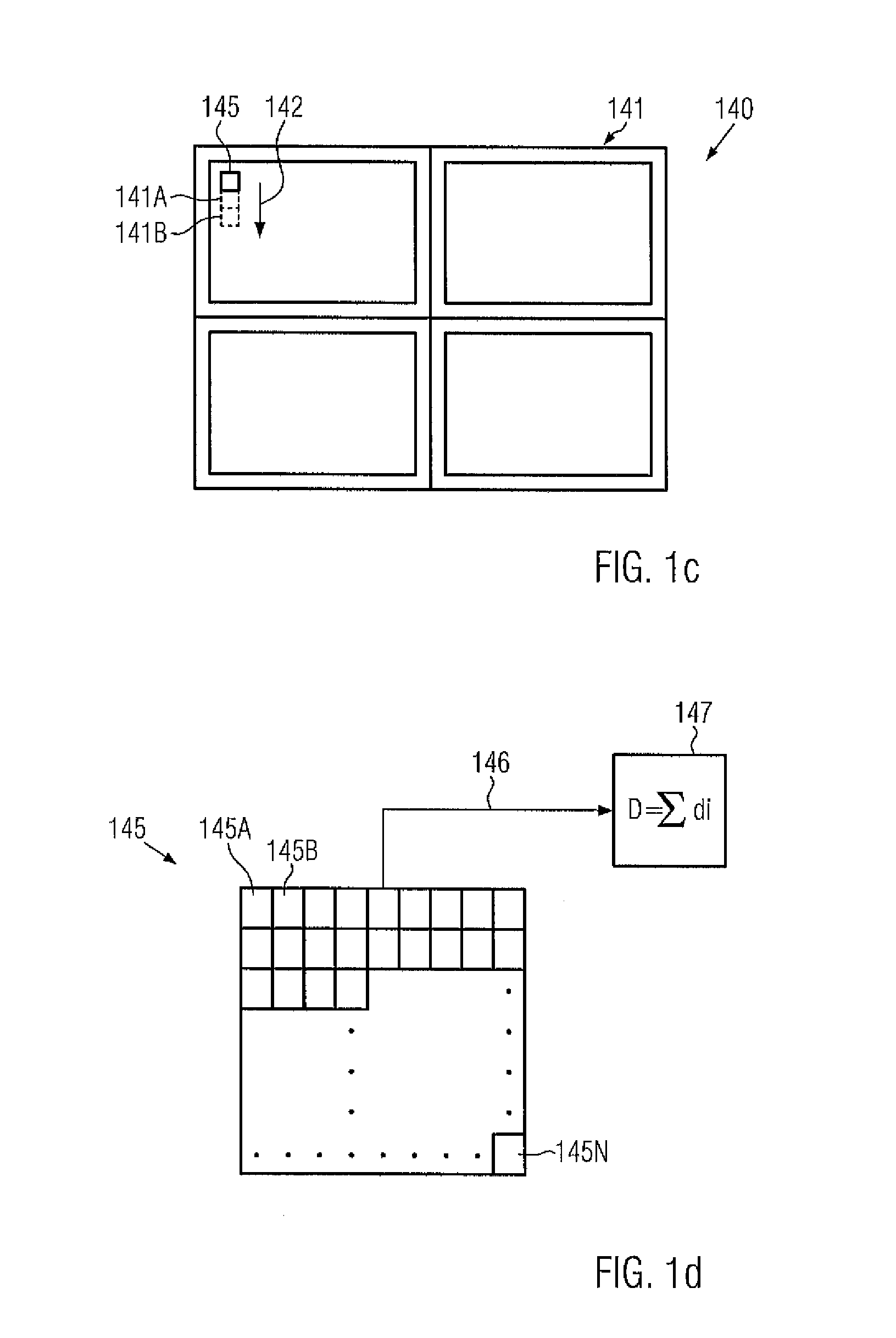However, any further progress in reducing the
exposure wavelength and / or increasing the
numerical aperture may not be expected in the near future and, hence, any further reduction of the critical dimensions may require fully exploiting the capabilities of presently available complex
lithography systems and associated process techniques.
For example, even any subtle changes in the
exposure dose within a single die region may result in a variance of the critical dimensions of several nanometers, which may no longer be acceptable in sophisticated
semiconductor designs.
For example, any non-uniformities of the imaging itself may be caused by certain imperfections during the manufacturing of the complex components, such as lens systems, illumination sources and the like.
Due to any imperfections during the manufacturing process, for instance with respect to the shaping of the individual lenses and due to imperfections in the materials used, however, a certain degree of deviation from an ideal imaging behavior is typically encountered, which may also be referred to as lens aberration.
These imperfections may, for instance, be caused by imperfect materials and process techniques, while also a certain degree of degradation of the mask may occur over the lifetime of the
photomask.
For example, a plurality of degradation mechanisms have been identified, which may increasingly cause a non-uniform transmission, which may thus be superimposed with the basically non-uniform transmission caused by the specific pattern of mask features corresponding to a certain device level of a
semiconductor device under consideration.
That is, the very complex
layout of modern semiconductor devices may result in complex patterns of circuit elements, wherein features of minimal dimensions, i.e., critical dimensions, may have to be provided with a certain density in some areas, while, in other areas, according to the
layout of, for instance, a complex logic circuit, a different pattern density may have to be provided, which may generally result in a different global transmission behavior across the
photomask, wherein, for instance, generally, a dense structure of mask features of critical dimensions may result in a reduced overall transmission, since a significant amount of light is lost due to the spatial filtering behavior of the lens aperture, when the mask features have dimensions at the resolution limit of the lens
system.
Consequently, in addition to the complex pattern of mask features, which may include the OPC corrections,
reticle-specific imperfections are typically convoluted over the pattern, thereby also imparting an individual
fingerprint or signature to the
photomask and the
resist features obtained therefrom, which, in combination with the tool specific characteristics, may thus result in certain process non-uniformities, which may not be acceptable in very critical lithography processes that require, for instance, extremely uniform critical dimensions across the entire
exposure field of the
system.
Consequently, in the last years, complex correction strategies have been developed in which a certain degree of correction may be applied in a controllable manner when performing critical lithography processes.
These well-established conventional strategies may thus provide information about discrete positions of the mask, however, without providing any information with respect to any non-uniformities that may be introduced by the exposure tool itself, i.e., by the lens
system and the illumination system.
Hence, upon establishing a correction function that is based on dedicated test patterns in the lithography mask, the tool-specific non-uniformities may not be taken into consideration.
Moreover, due to the limited number of dedicated test patterns in the lithography mask, a corresponding map of the two-dimensional discrete function obtained on the basis of the test pattern may not necessarily represent the remaining mask areas with appropriate precision.
Hence, performance of the correction strategy based on discrete test patterns may be very limited.
On the other hand, the measuring of real circuit patterns is, however, not a very promising approach, as these patterns are usually established on the basis of dedicated OPC models to correct each critical individual pattern in view of the limited
optical transfer function of the lens of the imaging system under consideration.
It is thus very difficult to differentiate between any “non-uniformities” introduced by the OPC correction and any other non-uniformities, which may be caused by other factors, such as manufacturing imperfections and the like.
Furthermore, it is quite questionable whether any such algorithms based on optical
mask inspection data may enable a precise determination of the signature of the individual lithography masks, in particular if lithography masks for sophisticated
logic circuitry are considered, in which significantly varying pattern densities and different sizes have to be implemented in a single lithography layer, for instance compared to layouts of memory devices, in which nearly identical patterns may be repeated many times. In particular, the reliability of any such algorithms may be inferior, since typically, as explained above, dedicated optical proximity corrections may be provided in a pattern-specific manner, wherein the optical “response” of the
optical proximity correction may be specifically designed for well-
defined imaging conditions of the photomask, which are not present in the optical inspection tool.
In particular, any such algorithms based on the determination of the transmission characteristics may be heavily affected by the significant variance of pattern density and sizes of the mask features in combination with the dedicated optical proximity corrections.
Furthermore, in these approaches, only the mask-specific non-uniformities are taken account of, while the lithography tool-specific imperfections are not included.
On the other hand, the measurements are taken from specifically designed test patterns, as described above, and hence the authenticity of the measurement data may be inferior, since the characteristics of critical circuit patterns may not be appropriately reflected by the test patterns.
It could be contemplated to obtain measurement values from thousands of actual circuit patterns, which, however, requires significant effort in terms of
process time and inspection tool resources, thereby rendering this approach less attractive.
Moreover, also in many cases, the critical dimensions and the local neighborhood of critical circuit patterns may significantly change in complex circuit patterns of
logic circuitry, which may thus finally result in non-representative measurement results, which in turn may lead to an inappropriate correction function.
 Login to View More
Login to View More  Login to View More
Login to View More 


